There is not a single person I know who does not like music. Whether it is to calm their nerves or to find a temporary safe refuge for their troubled soul, music can be such a magical thing to engage in.
Many people don’t realize all the years of hard work and training that goes into making good music. My instruments, especially the ones on this list, take unparalleled dedication to learn and master.
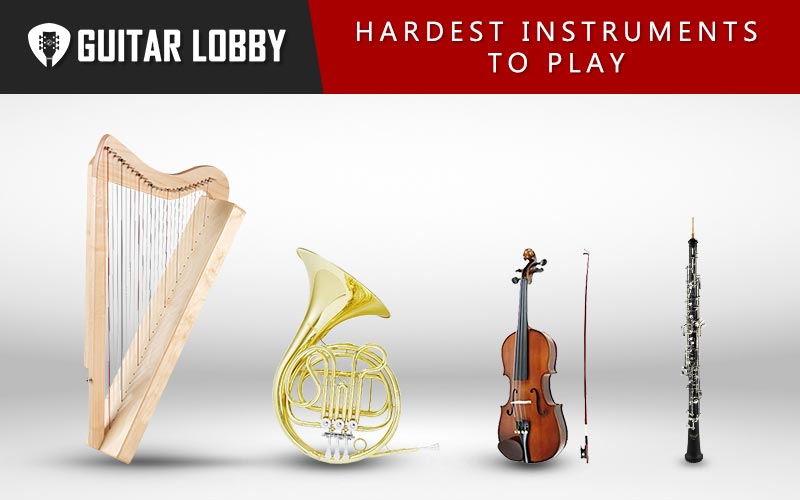
Curious about what these musical instruments are? Then, join us as we narrow in on the world’s hardest instrument to play. If you’re interested, we also have an article on the easiest instruments to learn.
Table of Contents
Here Are the Hardest Musical Instruments to Play
1. Violin
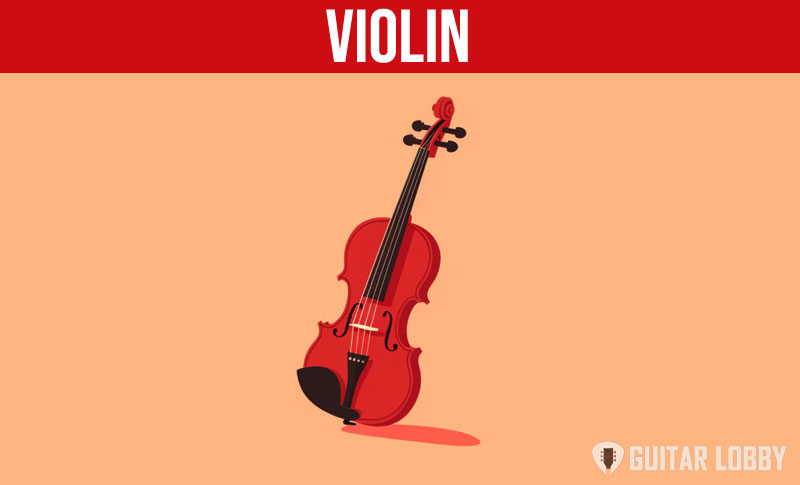
I have met many people who believe that learning to play the violin is as easy as learning to play the guitar. After all, both are string instruments. They also have almost the same shape, except that the guitar is larger than the violin.
Unfortunately, I do not want to be the bearer of bad news. Playing the violin is never a walk in the park. If you look at how violinists play, it would seem as if they are shutting the rest of the world down so that they can focus more on the notes they create.
While I agree that there are many wonderful kids out there who have become virtuosos in a short period of time, I can only guess that they practiced every waking hour of their young lives to get to a point where they can outplay an adult violinist.
There are many reasons why violinists spend many years training, practicing, and perfecting their violin-playing skills.
A Violin Produces Non-linear Vibrations
You need to understand that the vibrations produced by a violin’s strings do not have the same parabolic shape as that of a guitar. The vibrations are more V-shaped, known as the Helmholtz motion. This requires a very different manner of producing vibration.
Now, here’s the really fun part. You don’t use your fingers to vibrate the strings on a violin. You use a bow. What complicates things is that you have to master how to hold the bow and use it to create vibrations in the strings.
It’s All About the Bow
There is the amount of bow force you have to master to produce the desired Helmholtz effect. Pressing too hard will produce a graunch or raucous noise. The vibrations produced become chaotic. Too light and the sound you produce can be that of a surface sound.
It is also critical that you know where exactly to position your bow. If you want to avoid any of the undesired sounds from a violin, you will need to place the bow in the right place on the strings. In general, this should be away from the bridge for it to produce the Helmholtz effect. Unfortunately, it will take many sessions of pure trial and error before you find the sweet spot.
Position Matters
It is important to hold the violin in the correct manner. In case you haven’t noticed, you have to position the body over the shoulder and by your chin. For a right-handed person, one must hold the violin’s neck with the left hand. The right hand will hold the bow.
You might think this is easy. It’s not. The posture requires absolute control and focus. It also requires coordinating your right and left arms, while performing two different functions simultaneously.
Violins Don’t have Frets
How you position the fingers of your left hand can have an impact on the tonality of the violin. Why? Have you seen any fret on the neck of the violin? Well, there’s your answer.
Guitars are so much easier to play because they have frets that assign a specific semitone. The section in between frets can also make positioning of your fingers a lot easier to memorize to produce a specific kind of musical tone.
We don’t have these frets on a violin’s neck. You will have to memorize the exact placement of your fingers on the neck to produce a specific tone. And in case you do not know, there can be hundreds of different tones you can produce.
Your right hand will be holding the bow. You will draw this across the strings to produce vibrations. As I already mentioned, this is where your knowledge of the Helmholtz motion will come into play. That is why there are many techniques of holding and using the bow that violinists need to master.
Violinists have a Unique Set of Lingo
You will need to learn how to read musical notation that is specific to playing the violin. These can include vibrato, pizzicato, and the markings for bow direction. The last one is important so you will know if you have to draw your bow upward or downward. Other notations include arco, au talon, bariolage, bow lift, col legno, and flautando.
These are the most important reasons why learning to play the violin is not that easy. There are other reasons. I haven’t even touched on the importance of choosing the right violin. You see, no two violins sound exactly alike. That is where your hearing acuity will come in.
Nevertheless, I did not say that you cannot learn how to play this instrument. It just requires more dedication and commitment on your part to learn the basics. Unfortunately, even the basics can take time to master.
2. Piano
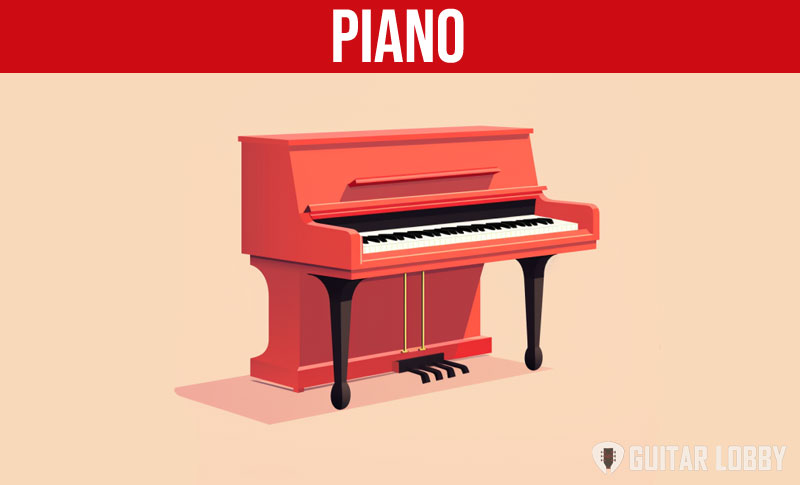
The notes produced by a piano are some of the most enthralling sounds you can ever hear. I am referring, of course, to an acoustic piano. The kind that we see in orchestras and other formal events. I am not referring to a keyboard or even a digital piano. These latter musical instruments are a breeze to play because manufacturers already simplify the process of learning for you.
Unfortunately, there is nothing simple about playing an acoustic piano.
Size Issues
A grand piano used in concerts can span a whopping 9 feet across and about 5 feet deep. Of course, there is always a baby grand or a studio piano to play.
What is important here is the number of keys that are arranged across the width of the piano. A grand piano typically comes with 88 keys, although I have seen a grand piano with 102 keys. You will have to memorize the notes of each key and the distinct sound that each one produces.
Both Hands, Please
And then there is the fact that not all of us are ambidextrous. Most of us are right-handed. Some are left-handed. And it is very rare to see a person who does not have any dominant hand. Either right or left works in exactly the same way and with the same level of competency and precision.
Why is this important, you ask? Well, if you are right-handed, then most of the things you will be doing are performed by your right hand. Playing the piano requires both hands striking on the different keys of the piano.
Playing the piano with your dominant hand will be easy. But, believe me, the kind of music you will produce will be less than spectacular. That is why you will also have to train your left hand to be as adept at striking the piano keys as your right hand. This takes a huge amount of time.
Not only do you need to train your non-dominant hand. You will also have to learn to coordinate their movements. This can be taxing to the brain. Your brain will have to integrate simultaneous inputs from both the right and left hands and then send out motor impulses to both hands in a synchronized manner.
Don’t Forget the Feet
Modern pianos also have foot-operated levers called piano pedals. There is the una corda on the left, the damper pedal on the right, and the sostenuto pedal in the middle. These pedals allow you to change the sound of the piano in different ways.
As such, you will also have to learn the different effects of these pedals and how each one can improve your music piece. It goes without saying that you will be adding another skill for your brain to master. You will have to learn to coordinate the movements of both hands and your foot as it presses on the pedals.
The Unique Music Sheet
And then there is the music sheet of a piano. Most musical instruments only come with a single staff. Piano music sheets come with two, sometimes three staves. The staves represent what your hands should be playing. The first staff represents the notes that your right hand will be playing. The second staff below will be the guide for your left hand.
In other words, your eyes will have to look at both staves. These visual cues will then go to your brain for processing. The brain will then ‘command’ your hands to strike the exact keys that will produce the notes on the staves.
Believe me, it is not an easy feat.
So, do you think playing the piano is easy? Yes, it is. But only if you have already mastered the basics. And only if you have already learned to coordinate the complex movements of your hands and feet as well as the musical note-reading capabilities of your eyes. When discussing the hardest instrument to learn, the piano certainly has to be near the top of the list.
3. Accordion
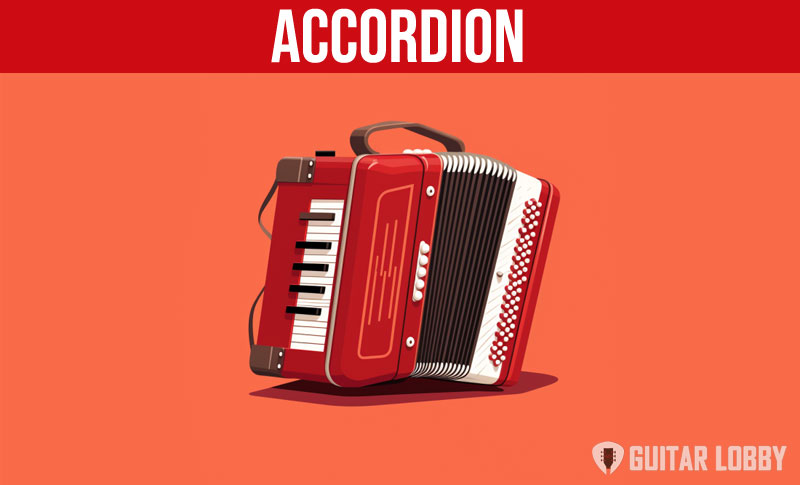
We always associate Oktoberfest with plenty of merrymaking, overflowing booze, and gastronomic delights. What many of us fail to appreciate is the music that provides the festive backdrop to the occasion.
The reason why I wanted to point this out is because Oktoberfests always feature the accordion in creating the fun and lively German music we always associate with the festivities. There is something almost magical about the music created by this instrument.
And the way musicians play the instrument will give you a false belief that it is easy to learn and master. You’d be wrong, as in dead wrong.
Which Accordion?
There are so many different kinds or types of accordions. But before we go into the types, let us first look at the basic components.
The most important part of the accordion is the bellows. This is the component that gives the accordion its ‘airy’ sound. If I have to be blunt about it, the movement of the bellows is similar to the importance of how the bow moves over the strings of a violin. If you do not know how to move it properly, then you will not be able to produce amazing music at all.
Let me simplify. Consider the bellows as the breathing of a professional singer. Singers have to master their breathing to control the overall quality of their sound. It also has an effect on the volume of the song, including the tone and the pitch.
As for the accordion’s bellows, you get to control the volume of the sound. This can include fascinating fades and exciting swells. You can create clear tones and mimic a singer’s expressiveness.
As I already mentioned, there are many kinds of accordions according to the variable components that accompany the bellows.
The right hand of the accordion can have diatonic button accordions, chromatic button accordions, piano accordions, and 6-plus-6 accordions. On the left hand panel are a stradella bass, a Belgian bass, or a free-bass system.
Mastering the Instrument Takes Time
It goes without saying that learning to play the accordion requires learning how to play the specific type of variable component that this musical instrument has.
Unfortunately, mastering the movement of the bellows alone already takes time. You have got to learn the different bellows motions and then integrate these with the actions of the variable accordion components.
Here’s the thing. Your right hand will be playing the musical instrument that is in the right box of the accordion. Your left hand will be playing with the bass settings of the accordion on the left. While both hands are at work, they will also be pulling and pushing the two parts together to move the bellows.
Sounds complicated? It is. That is why an accordion is one of the most difficult musical instruments to master. And I haven’t even touched on the physical dimensions of the instrument.
Quite Heavy
An accordion is quite large and heavy. That is why most musicians and music teachers recommend that accordionists should play it sitting down. A keyboard accordion, for example, can have 41 keys. The smallest of this type of accordion is about 14 inches and can weigh anywhere between 10 and 12 pounds. Larger ones can come it at 30 to 35 pounds.
Can be Backbreaking
While an accordion has shoulder straps to help distribute its weight, there is still the risk of injuring or hurting your back. I have met some people who complain of back pain after spending a few hours learning to play the accordion. So, you might want to think again about learning to play this musical instrument.
Learning to play the accordion is not only challenging. It can also be very tiring. You need both strength and patience to see yourself as a true accordionist. You will also need absolute coordination of your two hands. If you’re looking for the hardest instrument to play, consider taking up the harp!
4. Acoustic Drums
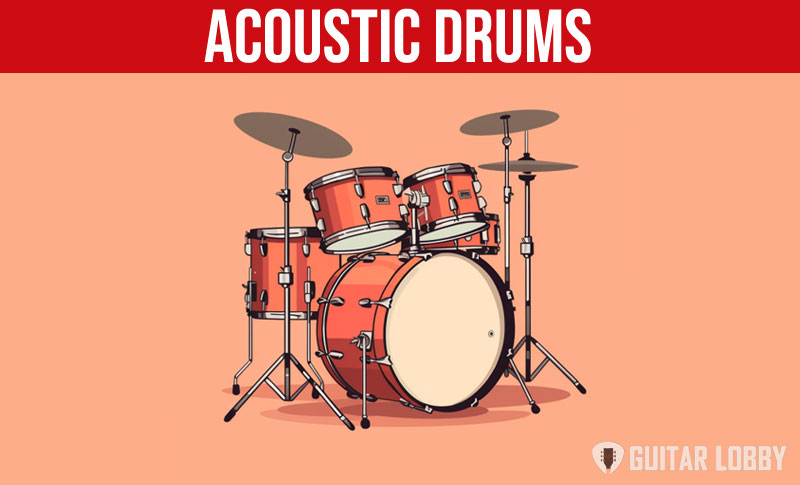
The drum is one of the oldest musical instruments known to man. Of course, it wasn’t always a musical instrument. It served as a defense tool, sounding the alarm to a fort of an impending threat. It also provided the cadence to a marching army as it moved across the fields of battle.
There are also civilizations and cultures that use the drum to ward off evil spirits and other supernatural creatures. Whatever and however you view the acoustic drum, this instrument has served its purpose well.
So, playing an acoustic drum set should not be difficult, right? I mean, even prehistoric man was able to use it without the luxury of modern technology. Unfortunately, playing the drums involves more than beating the surface of the drum.
Arm and Leg Muscle Strength Needed
If you look at the modern drum set, you will see at least two fundamental instruments. These are the cymbals and the drums. The drums can include a floor tom, a snare drum, a medium tom, and a high tom. There is also a bass drum. The cymbals can include the ride cymbal and the crash cymbal. You also get the high hats.
Given the number of components that a typical drum set has, you will need well-developed muscles to hit the different components. You need to have arm muscle strength and stamina to keep on beating on the drums nonstop.
While the drumsticks are not heavy, it is the repetitive motions of the drum beating that can be very unforgiving. If you have weak hand and arm muscles, there is a good chance that you will not be able to hit the surface of the drum with enough force to create a definitive sound.
Rhythm is Not Everything
You will most likely start learning how to play the drums by playing a basic 4/4 rhythm or beat. However, this is only the basics. Remember, you have other parts of the drum set that you need to beat, too.
Drums set the rhythm in any kind of music. It would be useless to learn how to play the drums if you do not have a basic understanding of rhythm.
Now, I did say that rhythm is not everything. You also need to understand the different accents and taps that are expected of any drummer. The funny thing is that learning to play the drum gets harder as you progress through the ladder.
Coordination of the Peripheries is a Must
Beating a single drum should be easy. Beating two drums in perfect harmony should still be a breeze. However, the moment you include beating the toms, the high hat, and the cymbals, playing the drums can get really complicated.
The point here is for you to develop absolute coordination between your arm movements and your foot movements. You need your foot to beat the large bass drum by stepping on and off the foot pedal.
It takes a lot of focus to will your mind to coordinate the different movements of your peripheries. This is not a problem if you are beating to a slow rhythm or beat. Once the tempo picks up, your brain’s integration and coordination capabilities will be put to the test.
Learn the Music Sheet of the Drummer
I once encountered someone who said that playing the drums is a lot easier than playing other musical instruments. He said that drummers do not have music sheets to worry about.
I am really sorry to burst your bubble. This is not true. Drummers also have a music sheet. You will need to learn how to read drum grooves. The music sheet will tell you how many beats you need to perform on the snare drum. You will also learn how many beats from the cymbals, high hat, toms, and bass drum will accompany the snare.
The most important part of reading the music sheet is exactly when you need to beat the different parts of the drum set. I do not need to remind you that learning how to read a drummer’s music sheet is very important. The only time a drummer will not need a music sheet is when he plays solo.
It would take many years before you reach this stage, however.
Drums Do Not Produce Melodies
Can you distinguish a C or a B or even a G# in a drum? No? Well, that is because beating along will never produce a melodic sound. You only get that loud thump on the drum or tom or that classic clang on the cymbals.
However, just because it cannot produce any melodies does not mean you can forego sharpening your listening skills. You will still have to employ your listening skills and perfect timing to coordinate your drum beats with that of the other musical instruments. Your drums should beat harmoniously with other instruments.
When you think about it, playing the drums is not as difficult as learning how to play the violin or the accordion. What is really challenging here is reading the music sheet and transferring that knowledge into coordinated movements of your arms and legs. The plus side? You’ll get a whole-body workout from all that intense beating of the drums.
5. French Horn
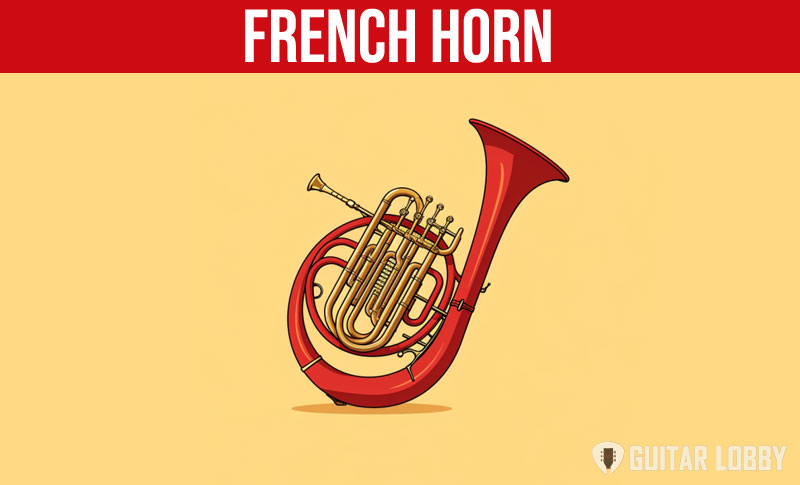
The French horn is one of the most perplexing musical instruments on the planet. In the hands of a skilled player, the French horn can produce blaring tones like those we hear from piercing trumpets. It can also be as soft and gentle as the clarinets and flutes as they croon to the audience.
Many experts believe that the French horn is the chameleon of brass musical instruments. It can be strong and powerful in one piece and then take on a gentler and milder nature in another musical adventure. I think this is why the French horn is so much fun to play.
Unfortunately, mastering the French horn is not that easy. You already know that this instrument requires more than simply blowing through the mouthpiece and pressing three levers on top. Let’s take a look.
The Correct Embouchure and Airflow
One of the very first things that you have to get right is the correct shape and position of your lips over the French horn’s mouthpiece. You must be able to buzz your lips to produce the right sound.
One problem with this is that many music teachers often find it difficult to demonstrate how exactly to create the perfect shape of the lips. This is understandable since the teacher’s lips will be obscured by the French horn’s mouthpiece. He may show it without the mouthpiece, but this will be a bit different.
So, why is the embouchure – the manner in which your lips touch or cover the mouthpiece – so important?
The French horn is a wind or brass instrument that requires a continuous flow of air through the tubes. I am not only talking about a tube that is several inches long. I have seen French horns that have tubes as long as 30 inches. The shortest I have seen are those with 12-inch long tubes. Of course, the tubes are not straight.
Try imagining yourself blowing through a 30-inch tube with a wide-open mouth. You will not be able to supply air through the tubes very long. Now try pursing your lips so that only a little amount of air escapes. You can now prolong the airflow.
This is important because the sound that you create with the French horn is directly proportional to the length of the tube. The longer the air travels, the lower is the musical note you produce.
A Different Kind of ‘Fingering’ Technique
Pardon the term, but this is actually what musicians use to describe the action of the fingers on the valve keys of the French horn. This is quite tricky because the different combinations of the valve keys can produce different notes.
Here’s a tip. The valve keys shorten the length of the tube. If the valves remain open, then the air will travel throughout the entire length of the tube. This produces a very distinct low note.
Whenever you press a valve key, you somehow shorten the distance between the mouthpiece and the bell. This produces a note that is higher than the one created by open valve keys.
Tones are Way Closer to One Another
The thing here is that the amount of pressure applied to the valve keys can also have an effect on the tone.
If you compare the notes produced by a French horn and those produced by a tuba, trombone, or trumpet, you will notice that the notes lie close to each other. Sometimes, the line between two notes is so fine that you will think you are hearing the same note and not two.
It is easy to crack something if you do not use the correct embouchure and the right volume of air through the mouthpiece. You will miss your notes and create a less-than-stellar performance.
This is one of the most important reasons why it can be very tricky to master the French horn.
Be Mindful of the Bell
Did you notice that the French horn’s bell is facing backward, away from the audience? Other brass instruments have their bells facing the crowd. The French horn is a bit shy.
This counterintuitive positioning of the bell can pose a very different kind of challenge. French horn players have to be very mindful of the tempo of the piece they are playing. They have to anticipate when the next note will occur, as the French horn will produce a slightly delayed sound.
There is also the issue of the pitch of the French horn. Many composers call on their players to put their right hand right inside the bell. This traps the air to produce a muffled buzz.
What makes the French horn really tricky to master is its complex mechanics. But, once you have mastered how the instrument works, then it should be easy-peasy from then on.
6. Bagpipes
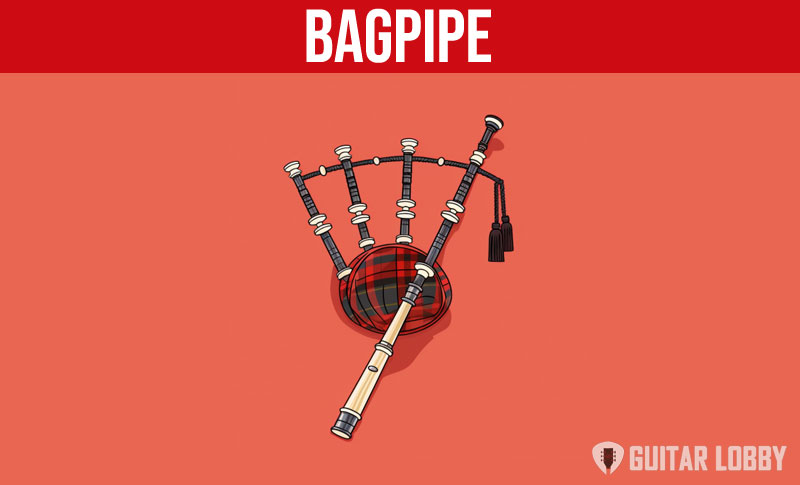
I don’t know about you, but I have always had a fascination for Scots. Some people may find their accent to be funny. I find it unique. And you know what else I find very interesting in the Highlanders?
Their bagpipes.
Of course, bagpipes are not exclusive to Scotland. I just learned that there are many variants of this musical instrument. There is the gajde of Albania, the gayda of Bulgaria and Turkey, and the gaide of Romania and Greece. You can also find variants in the Persian Gulf, northern Africa, and even western Asia.
Now, just because the bagpipe is quite common in these parts of the world does not mean it is already easy to play. If you think playing the French horn is tricky, wait ‘till you get your hands on a Great Highlands bagpipes.
You Need Powerful Lungs
I mean it. It is important to have a large lung capacity to produce sound with the bagpipes. You see, bagpipes are just like any other wind instrument that relies on air for it to produce sound.
When you blow through the blowstick, air goes through the large bag and then to the chanter and drones. Unfortunately, this is the tricky part.
The bag needs to stay inflated for up to 25 seconds. The more important thing is to ensure the bag has the right amount of air pressure. With no pressure gauges to keep you abreast of the pressure inside the bag, you will have to somewhat guess.
Another thing is that the air should be equally distributed to the drones and the chanter. If not, your bagpipe will sing out of tune. Using the wrong air pressure can also have an impact on the pitch.
The only way you can avoid these issues is by inflating the bag to the right pressure for as long as possible. That is why you need to have iron lungs if you decide to play bagpipes.
Mind the Embouchure
Okay, so here is that word again, embouchure. The good news is that bagpipes have undergone a lot of changes through the centuries.
In the past, pipers needed to cover the blowstick’s tip with their own tongue to prevent air from escaping. Modern bagpipes now have a non-return valve.
This doesn’t mean you can position your lips over the blowstick any way you want. You will still need to maintain the right positioning of the lips to deliver air to the bag and through the chanter and drones.
Requires Precise Arm Movements
Ever wonder why bagpipers hold their musical instruments like a teddy bear?
Remember what I said about maintaining the correct air pressure and the need for equal distribution of air through the chanter and drones? Here’s the thing. The arms compress and relax the bag and the bellows.
One arm squeezes the bag while the other holds the bellows in a relaxed manner. As the arm squeezing the bag slowly relaxes, the other arm slowly compresses the bellows. The transition should be as smooth as possible to maintain the right tone of the bagpipes.
Unfortunately, one has to have a strong will to resist the temptation of synchronizing the arm movements to that of the music’s tempo. Doing so ruins the quality of the sound. People will know you are out of tune. Remember, bagpipes require constant and steady airflow.
Tuning the Bagpipes is Tricky
Very few musical instruments need to be tuned very often. And one of these is the bagpipes. You see, this instrument has reeds as its major components. The reeds are often at the base of the chanter and the drones.
Now, when you blow through the pipe, you also blow a bit of your saliva. This can moisten and change the temperature of the reed. This can affect the overall sound coming from the drones and chanter.
A very crucial skill of a bagpiper is knowing how to tune his instrument. If it is the chanter reed, then you need to flatten or sharpen the notes by adjusting the reed’s seating.
This is just an example of how complicated tuning bagpipes really is
Tricky Fingering Technique
Some people think that fingering bagpipes is easier than fingering a French horn or even a trumpet. What they fail to recognize is that it is very tricky.
It is important to know that the chanter always produces constant sound. There is no silence or pauses in between notes. The only way you can play a single note twice in succession is by playing a short grace note.
Here’s the tricky part. Playing a grace note requires finger positions that are very awkward. You will only need to cover half of the holes. What complicates things is that there is no identifiable time in the chanter reed’s sound where you can insert the grace note.
Yes, bagpipers play their instruments like a fun toy. What many of us don’t realize is that they have been playing the bagpipe almost all their life. Many consider the bagpipes to be the hardest instrument to play.
7. Harp

Harps intrigue me a lot. They produce angelic, almost heavenly melodies that can easily transport you to the side of Zeus or some other Greek god high up on Olympus. The instrument looks relatively easy to play. But as you already know, this is a lie. Let us count the reasons why.
A Lot of Strings
Guitars only have six strings. And yet, most people already find it difficult to pick or pluck the right string to produce the kind of note that sounds beautiful to the ears.
Now, try a harp, and you can easily see that this is an instrument that is a nightmare for people with dexterity issues or fine motor problems.
A typical lever harp will have about 22 to 36 strings. It would be like playing six different guitars all at the same time. Now, get this. There are also lever harps that can have as many as 40 strings. Pedal harps have more strings, numbering about 47.
There are Pedals, Too
I mentioned above that there are pedal harps. The pedals on a harp provide you with the ability to flatten or sharpen a note. So, while your fingers are busy strumming the strings, your foot should also be in sync.
There is no question that playing a pedal harp requires absolute precision and coordination between your arms and one of your legs. The foot should be able to strike the right pedal at the right time the correct string gets plucked. Sounds simple, yet tricky to accomplish.
Muscle Memory Needed
Because there are many strings to pluck, playing the harp requires excellent muscle memory. Your brain should be able to direct the muscles of your fingers where they need to pluck the next string.
The same is true with your foot that operates the pedals. It needs to have excellent muscle memory just when to apply the pressure on those pedals.
The funny thing is that you also need to sharpen your listening skills. This is true for all musical instruments. It is important to have very keen attention to the different tones of different notes. You should know if a particular note is spot-on, sharp, or a bit flat.
Not Many Resources for Self-Help
Very few people play the harp compared to other string instruments, like the guitar. It is for this reason that you will not find that many resources to help you learn to play the harp on your own.
The only way – and the best possible way – you can learn how to play this instrument is by hiring a harp music teacher or instructor.
Harp instruction is not cheap. Pedal harps are also so large that it would be impossible to bring one to the studio to learn your lessons. Your best bet will be to start with the smallest lever harp you can find.
Learning to play the harp can be very challenging. It needs time. More importantly, it requires your undivided attention, commitment, and dedication. Only then can you start playing heavenly melodies with ease.
8. Oboe
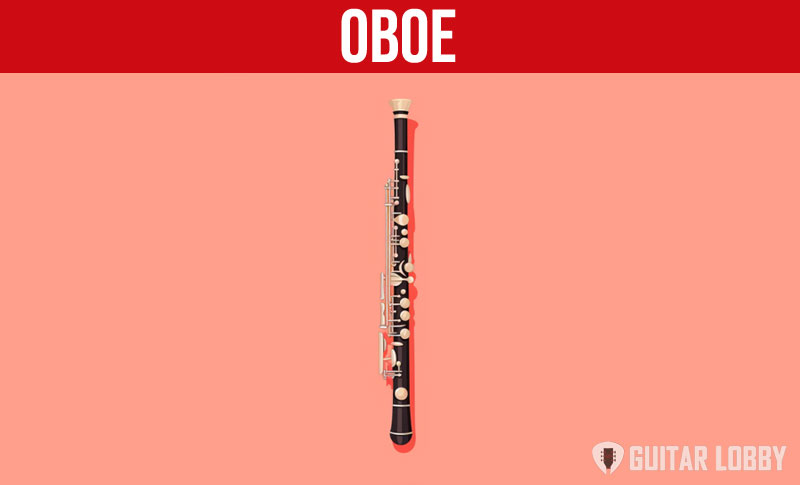
I was thinking of including the flute in this list. However, I thought about its larger cousin, the oboe. Not many are familiar with this instrument. In fact, I have heard people calling the oboe the clarinet.
The oboe looks like a large flute, leading some people to believe that it is easy to play. This is far from what is true. This is one of the most insanely difficult woodwind musical instruments to ever master.
An oboist can play a high note but fail miserably in producing a pianissimo. There is also the issue of timing, where the note comes out before or after when it is supposed to. These are just some of the many problems that aspiring oboists have to face.
The joy of playing the oboe comes with the conquering of the different nightmares of a true oboist. It is one of the hardest instruments to learn, but it is also very rewarding.
Learn the Correct Embouchure
Expect the oboe to require the correct embouchure. As I already mentioned in the preceding sections, wind instruments require a steady flow of air. You can only deliver this if you know how to position your lips over the mouthpiece.
For example, if you bite too much on the reed, there is a possibility of having a poor low register response. The action can also lead to a shallow tone or inconsistent clarity and accuracy in the sound produced. The lowest notes will sound like gurgles.
Requires Excellent Control of Breathing
The key to successfully playing the oboe is providing constant airflow through the instrument. This is necessary to sustain the notes. If you have weak lungs or cannot exhale in a prolonged manner, then the oboe is not for you.
Playing the oboe means blowing air through your mouth. At the same time, you have to inhale through your nose. In other words, you will be inhaling and exhaling at the same time.
Beginning oboists will find this difficult to synchronize. Our brain is wired to inhale and exhale in an alternating fashion. Oboe-playing requires you to do both at the same time. Of course, you can always think that you are not actually exhaling through your mouth. But then again, it is not that easy to counter your natural tendency to exhale or force air out after inhaling.
Correct Fingering Techniques
Blowing through the mouthpiece of an oboe does not create music. Activating the different levers on the body of the oboe does. That is why it is critical to learn the correct fingering techniques for oboe playing.
Each press of the keys produces a note. Pressing a combination of keys can produce different notes. Doing different combinations can produce a melody, but only if you press the correct keys.
One more thing. Even if you did manage to press the right key, applying the wrong air pressure through the mouthpiece will still give you a note that misses its mark.
A Lot of Potential Problems when Playing
It is easy to make a mistake when playing the oboe because of the precision it demands when blowing through the reed and fingering the correct keys. You can have loud dynamics and explosive attacks, yet the low register response is poor.
The notes can squeak, blip, or gurgle. These problems require different solutions that a newbie may have difficulty applying. The oboe is an amazing musical instrument. That is if you can master the intricacies of the oboe.
9. Organ

People think that playing the organ should not be that different from playing the piano. After all, they do look the same. They have keys that you press to produce sound.
What most of us don’t know is that there are different types of musical instruments. A piano is, first and foremost, a percussion instrument. On the other hand, an organ is classified as a woodwind musical instrument.
You read that right. An organ is like the French horn, oboe, flute, and other instruments that rely on airflow to produce sound. That is why the sound produced by an organ is very different from that of a piano.
Try striking a piano key, and the note will not last that very long even if you hold the key down. A piano cannot sustain the note unless you press the sostenuto pedal. The alternative will be to strike the key repeatedly.
In an organ, there is no need to press on a sostenuto pedal. There is also no need for repeated pressing of the key to sustain its note. You only need to hold down that key, and the note will last until you lift your finger off the key.
So, the organ should be easier to play? Not quite. And here are the reasons why.
Multiple Keyboards
A piano has a single keyboard that can have as many as 102 keys. An organ can have at least two keyboards. I have actually seen an organ with a mind-boggling 12 keyboards. Playing on a single keyboard is tricky enough. Having up to 12 keyboards to play within a single instrument is insane.
The multiple-keyboard nature of an organ also presents physical challenges. In a piano, it is normal to crisscross hands from the right of the keyboard to the left and vice versa. An organ amplifies this by making you reach for the keyboard above the one you are playing and then reaching for another keyboard to your right or left.
Now, you have got to have a super brain to integrate all of the sensory inputs to strike the right notes at different keyboards.
Plenty of Knobs to Manipulate
I only talked about keyboards in an organ. I did not talk about the knobs that are quite common on the side of each keyboard. So, if you have five keyboards, you will also have five sets of knobs to manipulate.
You will have to be quick enough to strike the keys on the board, switch the knob to produce the right effect to accompany your notes, and then get right back to playing the organ.
Different Keyboards, Different Octave Sounds
You have to remember that an organ produces different kinds of sounds. As such, if you have three keyboards, you can expect to produce three different kinds of sounds. Sounds easy enough, except that each sound will produce different tones.
Each keyboard has an octave that differs from the others. While this may not be an apparent issue, it does pose a challenge to those who do not know how to read a music sheet.
Now you see why playing the organ can be more complicated than playing the piano.
Requires More Dynamic Control
Given the complex nature of an organ, you can expect more dynamic control. It is never easy to strike the right keys on a single keyboard, let alone an instrument with multiple keyboards. It has knobs and other elements that also require tweaking on the fly.
It could take years for an ordinary person to learn the ins and outs of playing the organ. And if you clearly do not have the patience for it, an organ is hardly the kind of instrument that you would want to play. When people ask what is the hardest instrument to play, they shouldn’t be surprised to hear the organ mentioned.
10. Cello
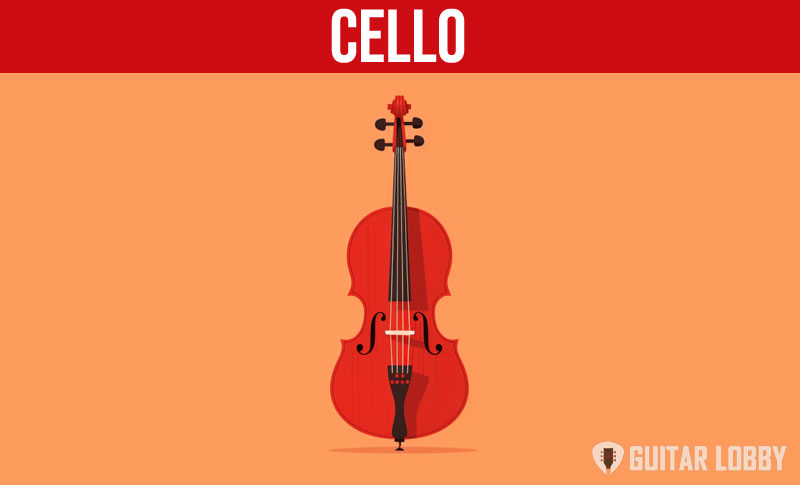
I mean, if learning to play the violin is already difficult, what more can you expect from a violin that is as tall as an average person?
Playing the cello should present the same challenges as playing the violin. I already discussed the different reasons why playing the violin can be difficult. However, I am compelled to reemphasize the following points in terms of playing the cello.
The Correct Position
One of the most important advantages of the cello over the violin is that there is no need to rest the cello on your shoulder and under your chin. This is because the instrument is too large. Playing it will be a lot more comfortable to some extent.
Holding the neck of the cello while playing it can present a different challenge, however. This is not only a large instrument. It is also heavy. And it gets propped by a thin stand that gets planted on the floor.
You will have to have exceptional arm muscle strength to hold the cello in an upright position. At the same time, this hand holding the cello’s neck is also the same hand that will press the strings to produce the notes.
Bow Position and Movement
Like playing a violin, playing the cello requires absolute control of the bow. While you may see some cellists pluck the strings with their fingers, this is not the main way to play the instrument.
The position of the bow will have an effect on the overall quality of the sound. How you move it over the strings can also have an impact on the sound produced. That is why many aspiring cellists spend many months simply practicing the correct positioning and movement of the bow.
Finger Play
I cannot emphasize this enough. Think of the cello as a means of communication. The bow is the method of talking or conversing. The strings are the words you use to communicate.
While positioning and moving the bow at the correct location and instance is important, it is equally critical to press the right section of the string. Unfortunately, like the violin, you will never see any fret on the cello’s neck to help you determine the semitone you want to produce.
Moreover, the notes produced by a cello are far away from each other. It is often necessary to shift finger play more often than you would on a violin. If not, you will produce off-notes.
And, oh, did I mention the cello can have as many as 5 octaves?
Playing the cello may not be as difficult as playing the violin. However, it does present a few challenges that can make you question your belief about its ease of mastery.
11. Nyckelharpa
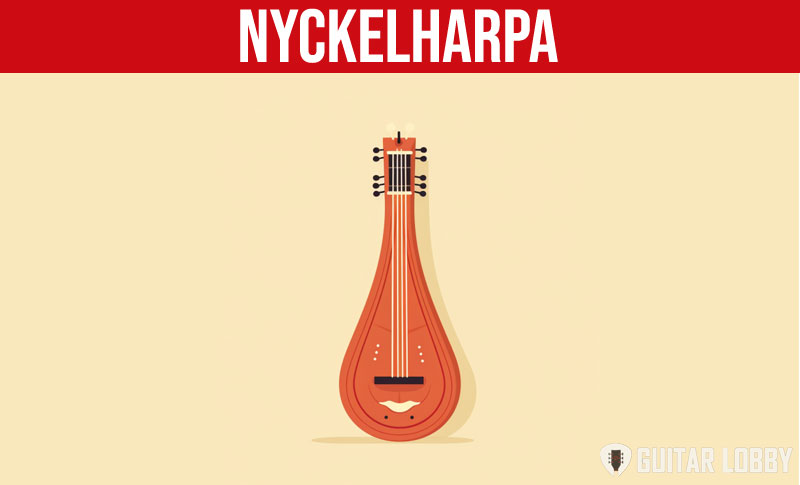
This is the coolest instrument I’ve ever seen – and you might think the same after you hear this song. It’s a traditional Nordic instrument invented in the 14th century and it’s mostly popular in the Northern European region.
Just looking at it, you realize this is almost impossible to play with over a dozen strings. The Violin and Piano are some of the world’s hardest instruments to master on their own, and the Nyckelharpa is like a combination of both. Imagine the dexterity you need to master strings and keys simultaneously.
Nyckelharpa mastery is almost mission impossible without year-long practice, but it can be a rewarding experience and make your band stand out. You’ll get looks everywhere you play this instrument because most people haven’t even seen it.
A Violin/Piano-Like Hybrid
Playing the Nyckelharpa is one of the hardest things you’ll do as an artist. The act involves key pressing, fingering, string pulling, and bowing. You’ll feel like you need 3 hands to manage it at once, but the sound is harmonic so it makes it worth it.
There’s also the bow, which you’ll have to master for the strings. If you’re not a fan of bowing instruments, you’ll find it very difficult to play. I’ve only seen musicians like orchestra Violinists having an easy time adjusting to the Nyckelharpa.
Harmonic Complexity
Forget about simple tunes when you’re learning to play the Nyckelharpa. There’s no easy way to start, and I felt like giving up within the first 15 minutes. Those keys you see at the front press against the strings to change pitch. You’ll need hard precision to press them in the right place.
There are dozens of sympathetic strings, and those create some complex sound textures. Compared to an instrument like the piano or guitar, where you can play cross-genre songs, most Nyckelharpa songs are composed for the Nyckelharpa only. Good luck learning them unless you have a really good instructor!
Maintenance Is Impossible
Let’s not forget that even if you learn a few tunes, this is one of the hardest instruments to maintain. Prepare for daily hands-on maintenance that involves tuning 16 strings and keys. This is a craftsman instrument, and only highly intelligent musicians can play it and care for it.
As a final note, you’ll feel like you’re traveling in time when you play the Nyckelharpa. This is hands-down one of the top 5 coolest instruments that exist, and it’ll connect you to Viking history and century-old music tradition. Play some Nyckelharpa records, and you’ll feel like you’re going back in time.
12. Theremin
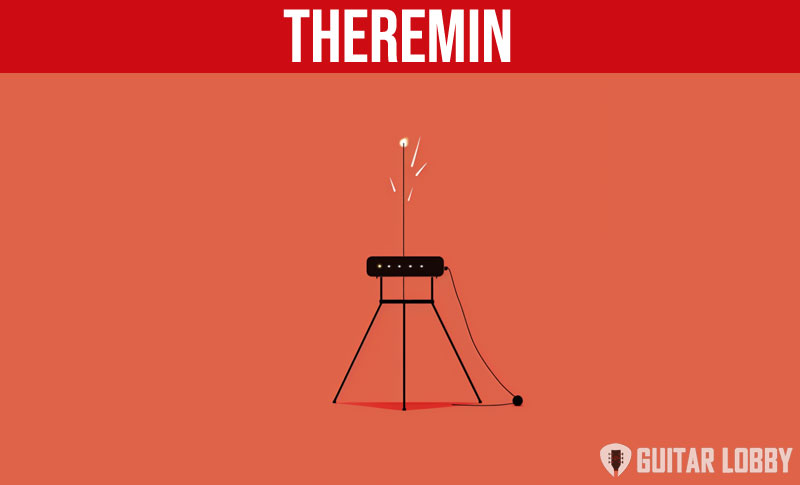
Here’s the coolest instrument you’ve ever heard of, Theremin. I was fascinated when I saw my friend playing this and had so many questions. How does the electromagnetic field make sounds? Why is there no physical contact? How do you move your hands like that to change the vocals? I’d never seen anything like that.
If this is your first time hearing about the Theremin, you’ll be shocked when you see the way it works. It was invented in the early 20th century in Russia and has a unique backstory that involves the Soviet government. Here’s a beautiful piece performed by Carolina Eyck that’ll introduce you to the instrument. You can listen to her playing gorgeous high-pitched vocals to a soothing melody.
Electromagnetic Field
The Theremin fascinated me because I couldn’t believe how artists just move their hands through the air and produce music. It feels like they’re sculpting music in real-time, but that’s due to the interaction with the electromagnetic fields. The hands move through different wavelengths and produce unique notes.
When I tried it, I realized why it was so hard to play because mine sounded nothing like the performers on YouTube. The instrument works without any physical touch, but it’s powered by the hand’s interaction with electromagnetic fields. It also releases these eerie tones that can feel a bit creepy at first, but then you realize they’re soothing.
Too Responsive To Quick Movements
You, as an artist, will have to move your hands through the electromagnetic field and trust me when I say it’s very sensitive.
The field will respond to the tiniest change, and hitting the notes is a massive challenge. When you see a pro doing it, they make it look easy. But you’re seeing years upon years of mastery.
If the electromagnetic field was less powerful, then playing this instrument would be easier. But once you move your fingers within that parameter, the Theremin responds instantly. You’ll be able to control the volume and pitch with the dials, but the rest is up to your fingers.
Experience Required
You’ll make bad tunes when you start, just like with every other instrument. Then, you’ll start practicing your finger motions, and you’ll find the sweet spot on those notes. I felt that the instrument allowed me to experiment a lot and test out different frequencies in the electromagnetic field.
It could take a month of practice to find the sweet spot for the notes you want to hit and produce the records you need. It’s best if you have powerful vocals to combine with the sound coming from the Theremin. That makes an impressionable, powerful sound.
It’s also surprisingly affordable to get a Theremin, considering the technology involved. If you like electronic music and want to challenge yourself, the Theremin is one of the world’s most interesting instruments.
13. Alphorn
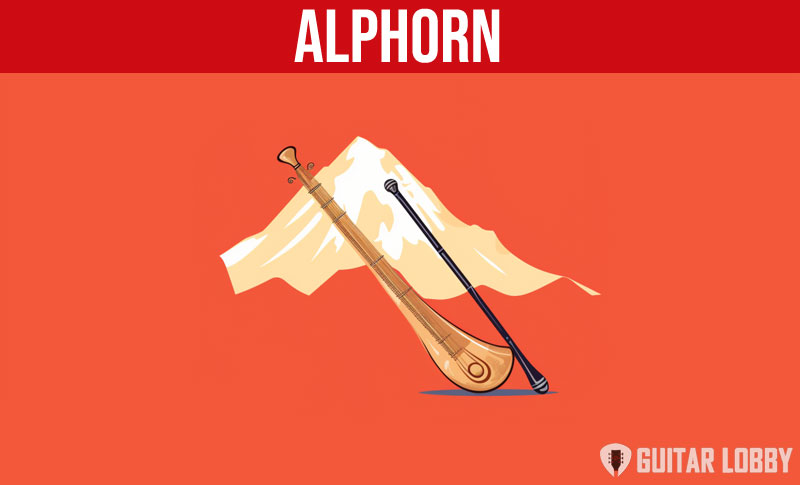
The Alphorn is associated with the Swiss Alps and its beautiful mountainous scenery. You imagine a traditional Swiss man wearing Lederhosen and sitting on top of the Alps when you picture this instrument. The tune sounds traditional and uplifting. It makes you patriotic for Switzerland and prepared to defend the country despite never having set foot there.
The Alphorn might be the world’s longest instrument, with some spanning up to 13 feet – they’re bigger than an NBA player. In terms of playing, they’re awfully similar to the Aboriginal Didgeridoo, which you can only play using circular breathing. So not only are you dealing with the struggles of size, but you have to master circular breathing.
There’s a reason why there are so few Alphorn players in the world, and they’re mostly concentrated in Switzerland. The Valais Drink Pure Festival in Switzerland is an annual event where you can experience this instrument and meet the players. It’s also your best bet as far as finding an instructor and learning how to play it.
So, if you want to learn to play the Alphorn – pack your bags and get a plane ticket to Switzerland to try and find a tutor.
Alphorns are mostly hand-crafted from Red Pine wood that grows in the mountainous Alpine region. The area gets a lot of snowfall, so one of the reasons they’re bent around the end is because the snow would fall inside, melt, and bend the wood. Modern Alphorns can be made from different woods and come in sizes from 7 to 13 feet long.
Your Notes Won’t Work Here
Here’s why it’s so hard to play: The notes don’t correspond to the notes found in the standard Western chromatic scale. You’ll get a bit of an overlap, but this is a simple instrument which means you’ll get the pure natural harmonic series. It makes it difficult to practice your favorite songs, and Alphorn’s natural range where harmonics are noticeable is between the 7th and 11th.
There are three octaves in the Alphorn, and you’ll mostly be playing high tones. If you’re coming from the Flute or Trombone, you’ll have to start all over with the Alphorn and practice for months to play the songs you already know.
Massive Size Requires Lung Capacity
You’ll be blowing air into an instrument that spans 14 feet – can you imagine the lung capacity needed to deliver tones through that monster? This will take months and months of practice, pain, and discipline. Alphorn players know how to inhale through the nose and exhale through the mouth simultaneously – and it’s in sync with the notes they’re playing.
The only way you’ll master the Alphorn quickly is if you’re already familiar with an instrument that requires circular breathing. It’s a highly demanding instrument, and then you have pitch control and harmonics to deal with.
Despite being one of the world’s hardest instruments, the Alphorn may be the coolest-looking instrument out there. Imagine having one at home and the reactions you’d get from your friends! You’ll be one of the few Alphorn players in the world, and it’ll help you understand the culture of the Alps better. This instrument was occasionally used to replace the church bell in the region.
14. Erhu

The Erhu can be summarized in two words: Chinese Violin. If the Violin wasn’t challenging enough for you – try the Erhu. In this YouTube documentary, two friends travel to China only to learn the Erhu. In one part of the documentary, he remarks, “I’ve never felt so useless.” That’s what learning the Erhu is like.
The ancient instrument is rooted in Chinese history, and it is the most popular Chinese instrument. It originates from the Xi people, a Mongolic people native to North-Eastern China, but for most of history, it was played in Southern China as well. It only has 2 strings and it’s played on the knee.
The bottom part (sound box) is made from actual Python skin, making it one of the most difficult instruments to produce. The Chinese government had to change laws to protect Python species from being hunted and used to make the instrument.
Soundbox Is Small
You might think that the Erhu is easier to play than the Violin because it only has 2 strings. Many argue that it’s harder to play because the soundbox is a lot smaller. You’ll need to put a lot more effort into the Erhu to achieve the same level of loudness – and best believe that’s required for the Opera. Keeping the Erhu loud over multiple hours is a challenge in itself.
Even if you know how to play it, you’ll need a lot of stamina for a performance.
Played Vertically
The Erhu is played with a bow, but unlike the Violin, you have to bow it vertically from the top down. On a Violin, you only play the front part of the strings and the bow is detached, while the bow is permanently attached to the Erhu and touches both sides. It can be challenging to learn, even for an experienced Violin player.
Another challenging aspect of playing the Erhu is the “effects” present in most Chinese opera. Players will usually stop the strings with their fingers to produce these effects, and there can be dozens of effects per symphony. The only thing that makes it easier is that the Erhu sits on your knee, so those movements go smoother and you don’t have to press it against your chin.
The Erhu is arguably more interesting to play than a Violin precisely because of the effects that are impossible to do on a Violin. However, it does have a narrower resonance compared to it, so you can expect a more nasally sound. It’s all about personal preference.
This instrument is definitely one of the hardest to master, and you might have to travel to China to do it. It’s best if you learn another bowed instrument like the Cello (which can be easier!) and then try your shot at mastering the Erhu.
15. Sitar
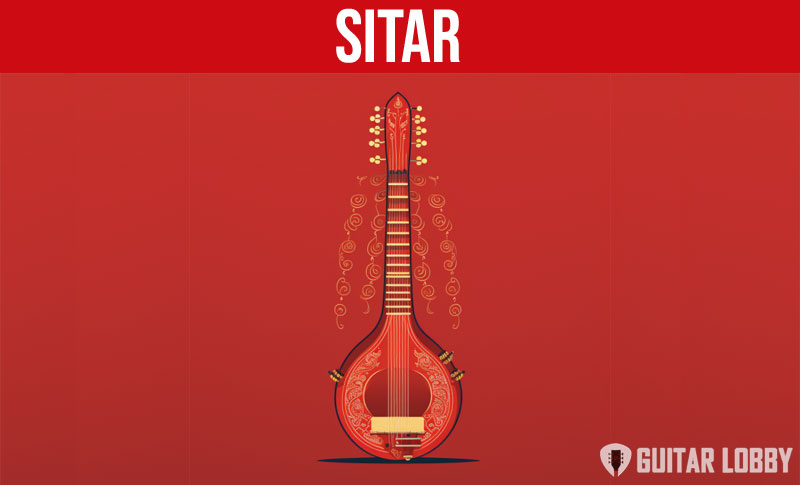
When I think of Indian music, the first thing I associate it with is the Sitar. The Sitar is India’s national treasure, and this instrument is the soul of Hindu culture. Artists use it to express their emotions, and records can range from soft and chill music like this performance by Rajeev Janardan to fast-paced, pop-style music like the Dinge Dinge we all recognize.
The Sitar resembles a guitar since it’s held in a similar way, but it’s way harder to learn. The closest instrument to a Sitar is the Tanpure, which also originates in India. There are 18-21 strings on a Sitar that you absolutely must master if you want to play this. It’ll take you at least double the time to learn a Sitar as it would a guitar. The instrument is approximately 4 feet long, so it’s a bit difficult to handle as well.
It originated in the 19th century in Northern India. A lesser-known fact is that the Sitar has been used in instrumentals for popular Western bands like the Beatles, the Rolling Stones, and the Doors since the 50s. This was always an instrument Westerners were familiar with, but it never became as popular as a guitar because it’s difficult to play.
Too Many Strings
Let’s start with the obvious: The strings. For a beginner, it’s much easier to start with a guitar that only has 6 strings and many struggle doing even that. Imagine having to learn 21 different strings and their behaviors. Even if you were a professional guitar player, it would take you a while to get accustomed to the abundance of strings on a Sitar.
Learning those strings, sympathetic strings, and movable frets is not an easy job. To achieve the signature sound that you hear in Indian Bollywood movies, you’ll need at least 6 months of practice under the mentorship of an Indian guru.
You’ll need to have a high level of finger dexterity and know how to precisely hit the notes. There’s a much wider tonal range on the Sitar compared to a guitar, so that adds to the training time required.
You’ll Need a Guru
Learning how to play the Sitar on your own at home (i.e., YouTube tutorials) is nearly impossible. All notable Sitar players originate in India and have practiced it for decades. It’s traditionally taught under the mentorship of an Indian guru, especially in the Northern rural regions of India.
Therefore, if you’re ready to learn the Sitar, you should prepare to pack your bags and head to India to experience what it’s about. You’ll not only learn to play the instrument, but you’ll learn about Indian culture and the meaning of their songs.
Another benefit to learning the Sitar is that you’ll be able to express a wide range of emotions with the instrument. There are so many possible sound textures and combinations that you could get really creative with this instrument.
16. Shakuhachi
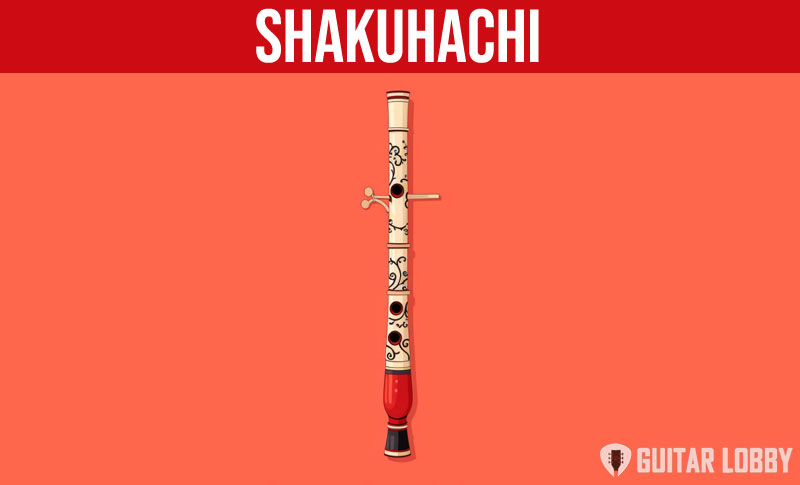
Shakuhachi is one of those instruments most people don’t know about but recognize when they hear it. If you’ve ever listened to Japanese folk music or watched anime, you’ve likely heard tunes being played with it. It’s one of the world’s oldest instruments and the symbol of Japanese traditional music.
Listening to this beautiful Shakuhachi record played by Rodrigo Rodriguez leaves you in a relaxed state of mind, and it’s frequently used in Zen music. When I meditate, I like to put on Shakuhachi songs because it helps me zone in the present moment. It’s a super relaxing and meditative sound.
Simple, yet Complex
The Shakuhachi is nothing more than a small piece of bamboo-shaped as an instrument. Don’t let this fool you because it’s not easy to play at all.
To produce those striking notes, the player must have a deep understanding of the natural properties of the instrument. The main focus is on breaths, and you’ll have to take some deep and controlled breaths to play basic notes. After 5 minutes of attempting to play the Shakuhachi, you’ll get exhausted. That’s why it’s best if you’ve built up stamina with another instrument prior to trying this out.
The breaths you’ll take are as deep as on a Bagpipe. You’ll also notice it’s not as responsive as a Bagpipe because you’re blowing air inside bamboo, so that’ll take practice.
Fortunately, there are only five finger holes, so there’s not much of a learning curve there. Most of your struggles learning the Shakuhachi will come from the breath work it takes to produce the notes.
Rooted in Tradition
The Shakuhachi is at the core of the Honkyoku tradition which is synonymous with Japanese culture – going back thousands of years. The idea behind the Honkyoku is to produce the kind of sounds that set one on a journey of self-discovery and going into a deep meditative state of mind.
If you start playing the Shakuhachi, you can craft your own flutes, and you’ll feel a deep connection to the instrument. All the Shakuhachi players I know are obsessed with the instrument and use it daily. They’re also very spiritual people who appreciate traditional culture.
The initial hurdles of breath management and learning how to hit notes on the bamboo instrument should be a fun experience. The small amount of finger holes makes us believe we can all play it, but it definitely deserves a spot among the world’s hardest instruments to master.
17. Bassoon
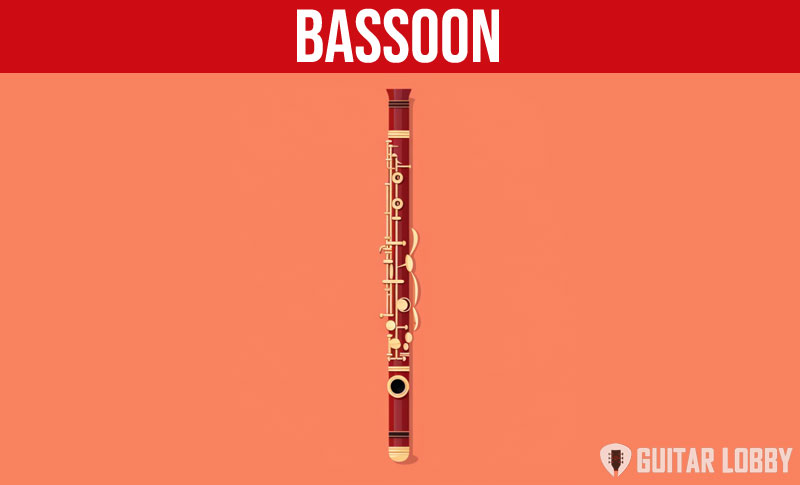
Seeing a Bassoon made me think of a Flute at first, but I changed my mind when I tried to actually play it. If you expect to be blowing air into a double-reeded instrument like a Clarinet, you’ll be surprised by the fingerings and vibration manipulation needed to play it.
Double Reed (No Keys or Strings)
This Bassoon uses ultra-complex fingerings (dozens of them!), and it doesn’t rely on strings or keys, so good luck learning it on your own!
You could spend weeks trying to master the double reed control, and you’ll still struggle because you’ll have to memorize all these fingerings. All the best players basically rely on muscle memory in their fingers to play it.
Mastering the sound production will require two things: Hard finger practice and strong lungs. You’ll need to build up muscle memory in your fingerings through months of practice, and you also have to have deep lungs to hit the notes.
If you have lung problems or are a smoker without deep lung capacity, don’t even try playing this instrument.
To hit the right notes and articulations that give the Bassoon its distinctive sound, you’ll need to practice breath control for a good 2-3 days. With all the double tonguing required, this instrument is for musicians with stamina because it’s exhausting to play for extended periods.
It’s The Size of A Human
The Bassoon is huge in both weight and size. That’s why it’s mostly grown males playing it – it takes physical effort to hold and play the Bassoon. I’ve never seen a child or teenager playing this instrument.
As you might guess, the maintenance and cleaning is a nightmare. A badly maintained Bassoon can lead to tuning issues and breakdowns, and you not only have to know how to play it, but how to keep it in shape… daily! You really have to love this instrument with all the care and attention it requires.
Lack of Mentorship
A Bassoon is mostly used to add baselines in classical concerts. There are very few people playing the instrument actively and even fewer teachers. You have to be fortunate to get a mentor for this instrument and might have to travel abroad to a place like Vienna. It’s not like the piano for which you could find mentorship in every city.
The bottom line is that you must really love the sound of this instrument if you ever want to try your shot at it. Maybe start off with a less challenging instrument like the Flute.
18. Double Bass
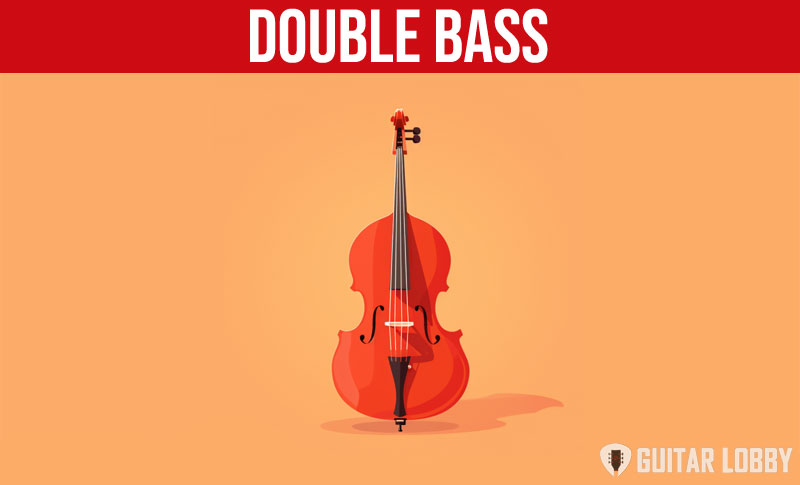
Want to play the biggest and badest instruments? Try playing the Double Bass. You’ll see this in orchestras, jazz concerts, and the occasional late-night TV show performance. It’s a fun instrument to touch and mess around with, but learning it is a different ball game.
It’s The Biggest Handheld Instrument
You’ll mostly see grown men playing this instrument because it weighs around 30 pounds. Can you imagine holding a Double Bass for hours on end? It’s one of the biggest instruments in the world, and you always have to stabilize it while you play it.
Yes, you could play it with your fingers, which makes it a bit easier, but it’s still a heavy-duty instrument. The carry case alone weighs over 40 lbs.
You’ll need to beef up that muscle before you start practicing, so hit the gym and work on those biceps first. Once you can handle the weight, you’re ready to start learning.
Maintaining Pitch
The weight issue transfers onto the intonation. If you want to maintain a pitch on this giant with its ultra-lengthy strings, you’ll find it challenging – especially after playing for more than 5 minutes. Your fingers will hurt, and it’ll require an exact finger placement. Hence, you’ll need some prior experience. Guitar players find it a bit easier to play because they’ve trained their fingers.
If you’re using the bow like a true orchestra maestro, you’ll have to master bow movements. Small details like the speed, pressure, and hand placement can make a huge difference in the sound. The dynamics and articulations of a Double Bass take years to fully master.
High-Wire Act
A Double Bass extends over 40 inches, and if you’re sitting, you’ll have to touch on those high wires, requiring movements that would make Olympic athletes jealous. This instrument requires flexibility and dexterity, so you not only have to be good at playing it, but you also have to prepare your body for endurance.
As a full-time Double Bass player, you’ll also be faced with technical difficulties from learning different genres. The instrument likes to present itself as a chameleon so you could be playing classical music at the Orchestra one day and performing Jazz songs the next.
You also get the burden of responsibility when you play in the Orchestra since it relies on the Double Bass to set the foundation for the rhythm. A good player has a strong sense of rhythm and keeps the ship steady.
Finding a mentor can also be tough, because skilled Double Bass players are hard to find – especially ones willing to pass on their knowledge to you.
19. Piccolo
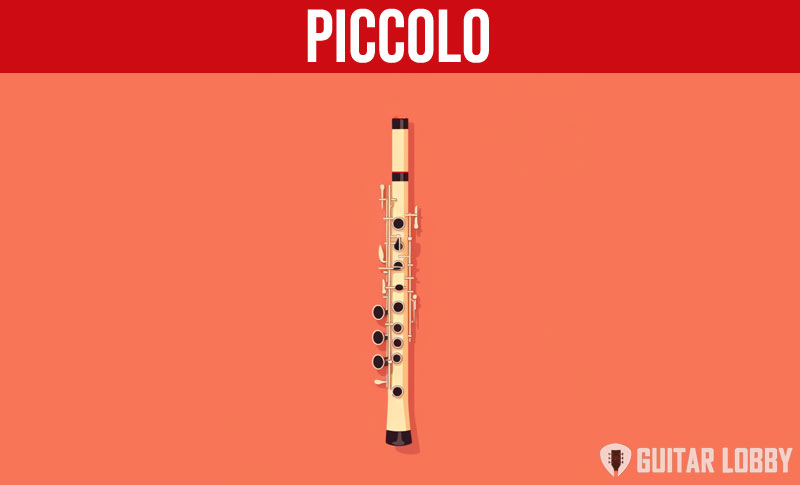
Don’t let the small size of a Piccolo fool you. This is one of the most amusing instruments I’ve ever tried, and everyone should give it a shot. You’ll love the high-pitched notes it can play, and it’s half the size of a Flute, so it’s easy to handle.
You also don’t have to blow a lot of air inside it to release beautiful sounds, but the problems come from the high-speed notes and articulation that it’s associated with. I’ll always admire professionals who can double Violins with the Piccolo and make it look easy.
You’ll Always Play Fast
The Piccolo ain’t slow. Yes, you can mess around with it and play a few notes, but when you have to perform songs like The Stars and Stripes Forever – you’ll see why it’s so difficult. The note acceleration can rival a supercar, so the skill level you need for rhythm maintenance is not to be underestimated.
If you don’t have fast fingers, it’s going to take you at least a month of practice to get accustomed to the notes on the Piccolo. It’s arguably as difficult as playing the Flute, and you can play similar songs with both. The only way you’re going to have an easy time transitioning to the Piccolo is if you’ve already mastered the Flute.
Breath Control
Becoming a Piccolo master is more about breath control than lung capacity. Compared to instruments like the Bagpipe or Bassoon, where you need the lung capacity of a diver, you actually have to control your breath here. You have to train your brain to release certain blows to hit the notes you need, and that’s an art in itself.
It’s all about pitch perfection with the Piccolo. Watch a Piccolo master to get a sense of how fast their fingers move and how they coordinate their movements. They conserve their breath and have nimble fingers that help with articulate notes rapidly. The end result is a high-pitched sound that contrasts the Violin and adds beauty to the symphony.
You Must Be Precise
I noticed that it heats up a lot faster than other instruments I’ve tried, like the Flute. It’s because the Flute is much larger, so the air doesn’t affect the temperature and consequently the tones as much. When you’re playing Piccolo at a high level, you must be a master at breath control and blow air in precise amounts, or the instrument will heat up and your notes won’t sound right.
There’s also the added pressure of being in a leading role in the orchestra. The Piccolo is always at the very front and takes on a solo/leading role, no matter the orchestra. You have to be confident as a person to perform on a Piccolo, so there’s a psychological element that adds difficulty to the performance.
20. Didgeridoo
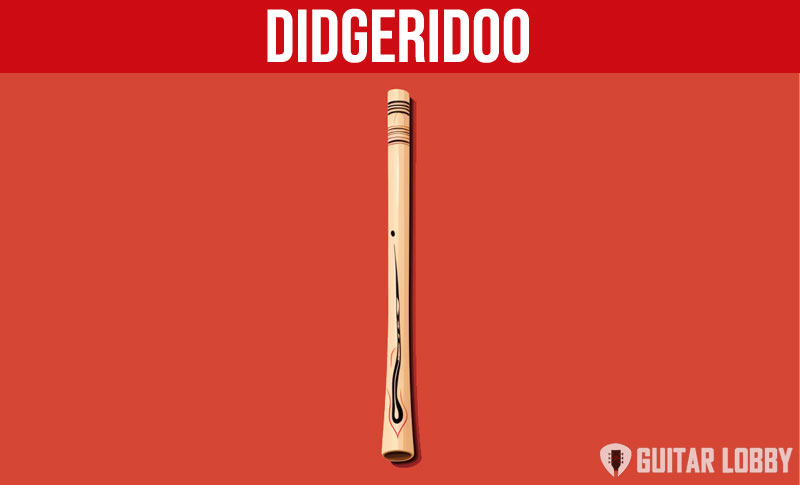
I have always been fascinated by Aboriginal culture, and one unique instrument that comes from the northern regions of Australia is the Didgeridoo. This is possibly the oldest instrument in the world because Aboriginals have a culture going back 50,000+ years, and the Didgeridoo is how they make music.
Listen to this performance by Lewis Burns, an Aboriginal playing the Didgeridoo, to get a sense of what it sounds like. You’ll notice it’s not really complex, and there are simple buzzing tones that sound like a drone wrapped in mystique.
The Didgeridoo is actually made from an Eucalyptus tree that originates in Australia, and the instrument is hollowed by termites, so it’s as natural as it gets. These are usually hand-made in the region and aren’t mass-produced like other instruments.
You’ll notice there aren’t any keys or strings attached, and you’re only using the breath to play the Didgeridoo. So, how come it’s one of the hardest instruments to play?
Circular Breathing Is Hard!
If you observe a Didgeridoo artist from afar, you’ll think it’s a simple instrument. He’s just blowing air in and out of the tree branch, right? However, look at their face, and you’ll notice it’s constantly changing. This is because of the circular breath required to play the Didgeridoo.
Circular breathing is a technique in which you have to simultaneously inhale through the nose and exhale from the mouth. You must do this continually to not interrupt the sound. Can you imagine the level of self-control and discipline required to do this? I’d struggle to do it without an instrument, let alone playing it.
Even if you can pull off circular breathing, it’ll take you years to learn how to manipulate the Didgeridoo sound to produce great-sounding music. To play a full tune like the Aboriginal artist above, it takes years of breathing practice and lip/mouth techniques.
Artists like Lewis Burns spent decades trying to achieve that buzzing sound and perfected the fundamentals. This includes variations in breath pressure, imitating nature (wind, animals, water) through breath, and tongue movements. What makes it even harder is the ability to do this for more than a minute. It’s a very exhausting instrument that’ll consume your energy and push you to the limit.
Most Didgeridoo players prefer to craft their own by hand. This shows a love for the instrument and allows them to hone it to their playing style. You can craft a Didgeridoo from an Eucalyptus tree branch and start playing.
The Didgeridoo is not something you can pick up on an off weekend. The knowledge is passed on through the generations, and that’s why few players even attempt learning it in the Aboriginal regions of Northern Australia. It is a pleasure to listen to, though!
Conclusion:
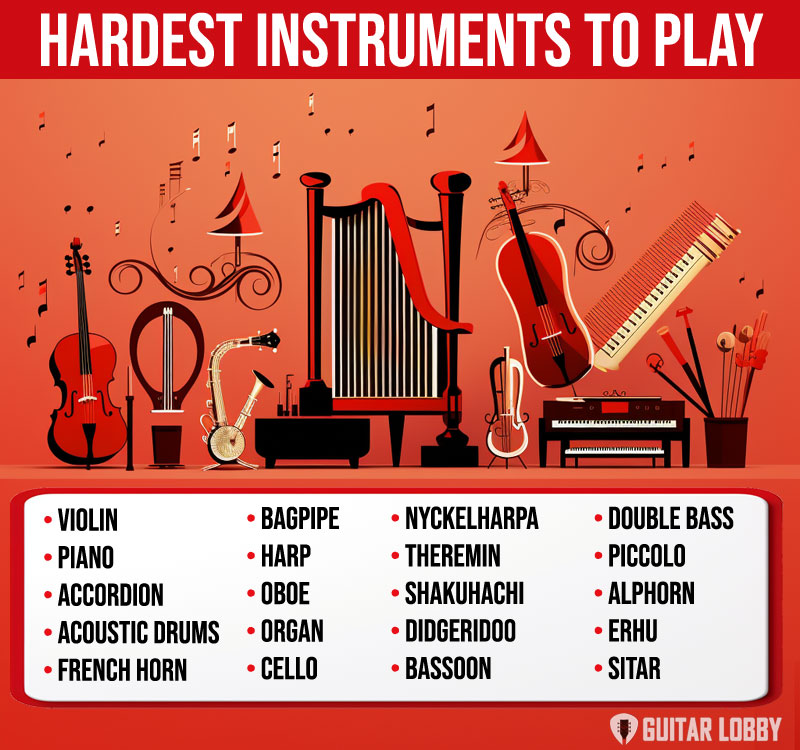
While these 20 musical instruments are the most difficult to play, it is still possible to learn and master them. It just doesn’t occur overnight, though. You will need patience, commitment, dedication, and focus to train yourself on the fundamentals of any of these musical instruments.
In conclusion, no musical instrument in the world doesn’t have its own attached difficulties; becoming an expert or a master player of any instrument solely depends on the dedication of the learner. A big kudos to all the musical instrument players in the world. You guys are the best, and for beautifying music for us with your various instruments, we say thanks.

My name is Chris and I’ve had a passion for music and guitars for as long as I can remember. I started this website with some of my friends who are musicians, music teachers, gear heads, and music enthusiasts so we could provide high-quality guitar and music-related content.
I’ve been playing guitar since I was 13 years old and am an avid collector. Amps, pedals, guitars, bass, drums, microphones, studio, and recording gear, I love it all.
I was born and raised in Western Pennsylvania. My background is in Electrical Engineering, earning a Bachelor’s degree from Youngstown State University. With my engineering experience, I’ve developed as a designer of guitar amplifiers and effects. A true passion of mine, I’ve designed, built, and repaired a wide range of guitar amps and electronics. Here at the Guitar Lobby, our aim is to share our passion for Music and gear with the rest of the music community.

You missed the very hardest instrument to play! The Pedal Steel guitar.